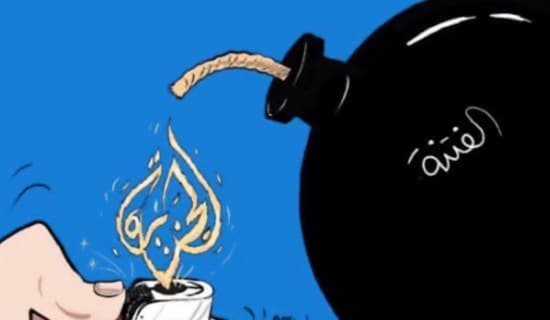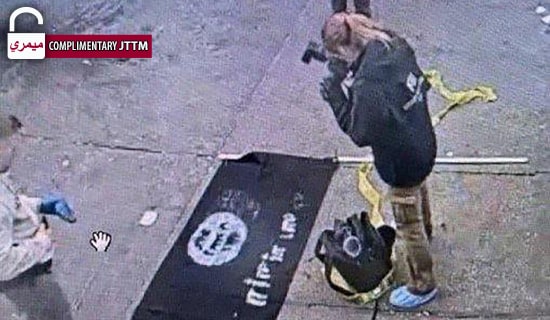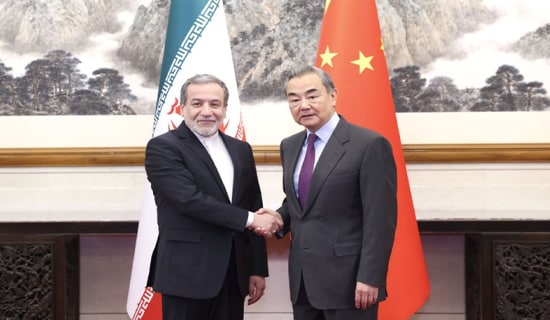What really happened during the Algerian Civil War of 1992-2002? According to Algerian media, during the "Black Decade," the Algerian army mobilized to counter the Islamists. But the truth may be different.
Mohammed Samraoui, a former Algerian army colonel who deserted in 1996 and has since been in political exile in Germany, experienced firsthand the "diabolical chain of events" that plunged Algeria into horror. He wrote his book Chronique des années de sang (Chronicle of the Years of Blood, Éditions Denoël) to show how a "handful of corrupt generals" burned their country to preserve their privileges.
In the book, Samraoui, whom I met in a secret location in 2009, stated that he has no intention of denying or justifying the crimes committed by the Islamists. Nevertheless, in his eyes, "the Algerian generals and the Islamic Salvation Front (FIS) leaders share responsibility for the Algerian tragedy."
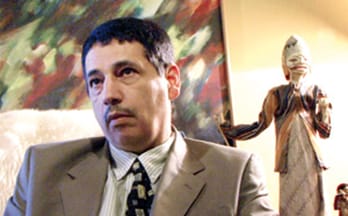
Mohammed Samraoui
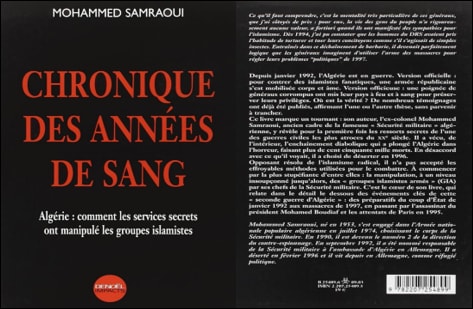
"The Creation Of The GIA By The Algerian Secret Services"
Following the landslide victory of the Islamic Salvation Front (FIS) in the first round of the December 1991 legislative elections, the army urged the regime to annul the second round. As a result, the president dissolved the National People's Assembly and, in the spring of 1992, the Algerian army was also tasked with managing the state of emergency. Samraoui recounted that the army chiefs had decided that the FIS threatened their own power and had to be eliminated. However, Samraoui stressed, the fight against the Islamists was an opportunity for the Algerian regime to get rid of other "enemies," such as human rights activists and Amazigh leaders in Kabylia.
Samraoui stated: "Every day, our bosses – Smaïl Lamari [aka Hadj Smaïn (1941-2007), Maj.-Gen. and head of the 'Direction du contre-espionnage' (DCE), i.e. the Counterintelligence Directorate, a branch of the "Département du renseignement et de la sécurité' (DRS), i.e. the Department of Intelligence and Security] and also [Maj.Gen.] Brahim Fodhil Cherif (1943-2008) – reiterated that we had to stop the 'fundamentalist threat,' as it put at risk the existence of the People's National Army (PNA)... They also explained to us that people like Hocine Aït Ahmed [historic leader of the 'Front des forces socialistes' (FFS) aka Socialist Forces Front], the lawyers Ali Yahia Abnennour (head of the Algerian League for the Defense of Human Rights) and Mahmoud Khelili (who campaigned to defend victims of repression) were "enemies" of Algeria."
To get an idea of the climate of bloodthirsty hysteria into which Algeria was sinking, Samraoui mentioned a statement made by Smaïl Lamari at a meeting attended by several DCE officers: "I am ready and determined to eliminate three million Algerians if necessary to maintain the order threatened by the Islamists."
In this context, it was difficult to be lucid about the organized perversion of the system being put in place. It took Samraoui several years to understand the full extent of the responsibility of those in charge of the DRS for the creation of the Armed Islamist Groups (GIA), which became an instrument of the most heinous crimes of the Black Decade.
"The DRS Emirs"
From February 1992 onwards, the Algerian press often mentioned Moh Leveilley, presented as one of the most dangerous Islamist terrorists. Samraoui, who had known him personally, said: "Moh Leveilley was an agent of the services, fabricated to make him an Islamist scarecrow and get him to commit attacks to terrorize citizens. He was finally killed by the security forces in Tamesguida on 31 August 1992. He was only the first of many 'DRS emirs' placed at the head of the GIA who were regularly liquidated once their missions were accomplished. It is clear that Moh Laveilley was not an isolated case. His use as a terrorist agent by the DRS was part of an overall strategy of manipulation by our leaders."
It should be stressed that in February-March 1992, "we were not yet talking about the GIA, but about djamaates (Islamic groups or armed groups)." This breeding ground, Samraoui explained, would give rise to the GIA, as it became known from autumn 1992 onwards – "a sort of federation of several existing groups that would gradually join the initial nucleus formed at the initiative of the DRS."
The Algerian Secret Services' Strategy
Explaining the strategy of the DRS over the years, Samaroui wrote: "From then on, it was no longer a question, as we had been told in the previous months, of manipulating the radical groups in order to control them better, but on the contrary, of doing everything possible to make them multiply and spread terror everywhere."
This strategy was based on several methods:
-
By infiltrating genuinely autonomous armed groups, through the intermediary of converted Islamist militants (most of whom were arrested by the services and then put back into circulation after being persuaded to collaborate, through blackmail or compromise), or thanks to DRS agents, such as the soldiers who posed as deserters and joined the maquis in Chréa, Zbarbar, Tablat, Beni Bouateb, Sidi Ali Bounab and Kabylia. Known for their regular attendance at mosques, they were accepted without suspicion, although they were indeed on a mission for the DRS.
-
Using the already manipulated groups that had turned to armed struggle in the early months of 1992 in order to attract new recruits
-
Favoring the creation of groups by militants who had been manipulated from the start without their knowledge (such as Saïd Makhloufi's 'Mouvement pour l'Etat islamique, i.e. Movement for the Islamic State, created in the spring of 1992).
-
Infiltrating, in the security camps of the south and prisons, fake Islamist criminals, who from 1993 onwards would form armed groups active in regions known for their FIS support. To give just one example, on the initiative of Smaïl Lamari, Captain Ahmed Chaker, who was Samraoui’s deputy in Chateuneuf, recruited a certain Mamou Boudouara, a notorious thug and alcoholic in Belcourt, who overnight became a fervent supporter of the creation of an Islamic State).
-
Creating, from scratch, armed groups led by emirs who were in fact DRS officers
All these techniques were used, sometimes in combination. Samraoui wrote: "The general idea of our leaders was to bring all these groups together to produce controlled and manageable violence. It was this delicate work that did not work so well – on the contrary, it led to chaos, because it required absolute discretion, and thus reliable officers, as well as perfect coordination between the various DRS services in charge of controlling these groups: The 'Centre principal des opérations' (CPO, i.e. the Main Center of Operations, known also as the Antar Center) led by Commander Amar Guettouchi's "Centre de recherche et d'investigation' (CRI, i.e. Center for Research and Investigation) in the city of Blida led by Commander Mehenna Djebbar; the 'Centre principal militaire d'investigation' (CPMI, i.e. the Main Military Investigation Center) led by Commander Athmane Tartag (alias Bachir); and of course the head of the DCE, Smaïl Lamari, and his colleague in the 'Direction centrale de la sécurité de l’armée' (DCSA; i.e. Central Directorate of Army Security), Kamel Abderrahmane, who oversaw these operations in liaison with Generals [Mohamed Mediène] Toufik [1939-], Larbi Belkheir [1938-2010] and Khaled Nezzar [1937-2023]."
These manipulations led to the creation of DRS-controlled GIAs. Yet at the same time, due to a lack of coordination, they got out of hand, and the violence spiraled out of control. This justified, starting in the autumn of 1992, massive intervention by the People's National Army (PNA)'s special forces, led by General Mohamed Lamari (1939-2012). "Let us say here that the fighting was carried out with incomprehensible ferocity and abomination (napalm bombing, use of artillery and helicopter gunships, massive use of torture, etc.)," Samraoui stressed.
Eradicating Any Opposition That Could 'Threaten [The Regime's] Privileges'
In his book, Samraoui also denounces the blindness of most of the international media to the true nature of the Black Decade, "because the simple observation of the Algerian political scene and the behavior of armed groups was enough to invalidate the dominant thesis of a fragile democracy threatened by Islamist fundamentalism and defended by courageous republican generals."
"In the end, who benefited from the GIA's actions? Certainly, not the Islamists... The GIA, surpassing itself during the presidency of Liamine Zeroual (1994-1998), went so far as to reproach the FIS leaders for their willingness to resort to political solutions or to seek compromises with the rulers... Thus, instead of attacking the generals and their auxiliaries, the GIA attacked the defenseless civilian population and waged a bloody war against other Islamic organizations. A simple reading of GIA pamphlets is eloquent and shows that their objectives paradoxically converge with those of the predatory Algerian generals... This attests to the determination of the sponsors who masterminded the Algerian tragedy to stop at nothing to maintain the chaos, pit Algerians against each other in a fratricidal war, and eradicate any serious opposition that might threaten [the regime's] privileges," Samraoui wrote.
Finally, Samraoui declared that he had written his book in the hope of helping to reveal the truth about the Black Decade. "One day, I am sure, history will give its verdict, and the criminals of the Algerian state will be brought to justice," he concluded.
*Anna Mahjar-Barducci is a Senior Research Fellow at MEMRI.


